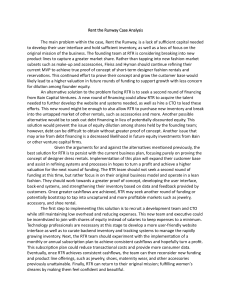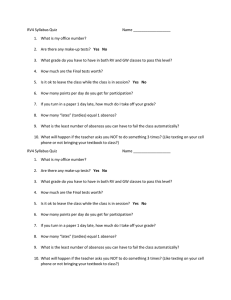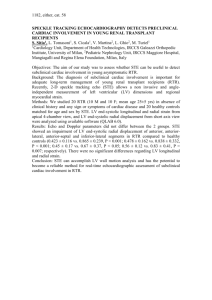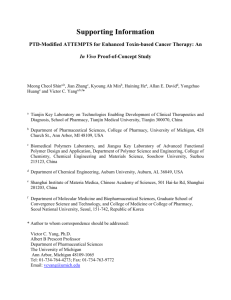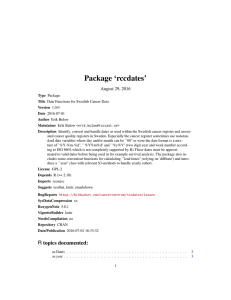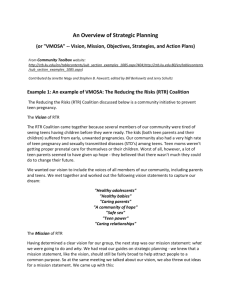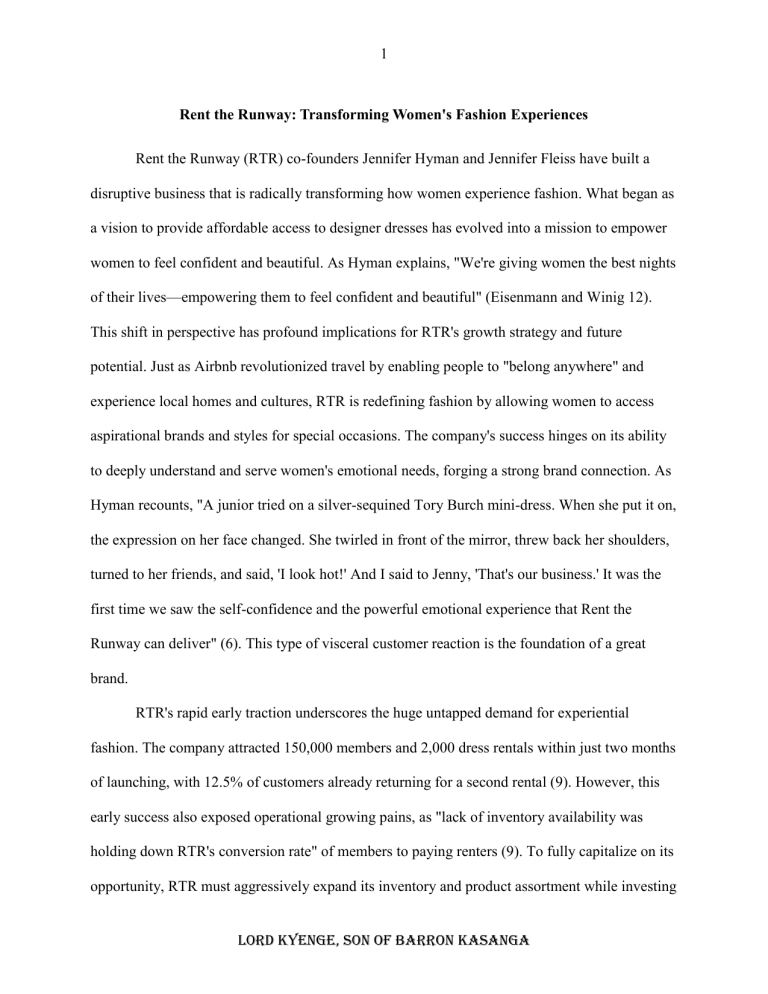
1 Rent the Runway: Transforming Women's Fashion Experiences Rent the Runway (RTR) co-founders Jennifer Hyman and Jennifer Fleiss have built a disruptive business that is radically transforming how women experience fashion. What began as a vision to provide affordable access to designer dresses has evolved into a mission to empower women to feel confident and beautiful. As Hyman explains, "We're giving women the best nights of their lives—empowering them to feel confident and beautiful" (Eisenmann and Winig 12). This shift in perspective has profound implications for RTR's growth strategy and future potential. Just as Airbnb revolutionized travel by enabling people to "belong anywhere" and experience local homes and cultures, RTR is redefining fashion by allowing women to access aspirational brands and styles for special occasions. The company's success hinges on its ability to deeply understand and serve women's emotional needs, forging a strong brand connection. As Hyman recounts, "A junior tried on a silver-sequined Tory Burch mini-dress. When she put it on, the expression on her face changed. She twirled in front of the mirror, threw back her shoulders, turned to her friends, and said, 'I look hot!' And I said to Jenny, 'That's our business.' It was the first time we saw the self-confidence and the powerful emotional experience that Rent the Runway can deliver" (6). This type of visceral customer reaction is the foundation of a great brand. RTR's rapid early traction underscores the huge untapped demand for experiential fashion. The company attracted 150,000 members and 2,000 dress rentals within just two months of launching, with 12.5% of customers already returning for a second rental (9). However, this early success also exposed operational growing pains, as "lack of inventory availability was holding down RTR's conversion rate" of members to paying renters (9). To fully capitalize on its opportunity, RTR must aggressively expand its inventory and product assortment while investing Lord Kyenge, Son of Barron Kasanga 2 in technology and operational excellence. As Fleiss notes, "There are dozens and dozens of ways we can boost efficiency," from improving website conversion rates to optimizing inventory purchasing and logistics (12). At the same time, the company must be careful not to overextend itself or sacrifice the customer experience in pursuit of growth. This balancing act is a common challenge for fast-growing startups, as evidenced by the struggles of companies like Groupon, which prioritized rapid expansion over sustainable economics and customer satisfaction. RTR appears to have a solid unit economic model, generating $90 in revenue per dress rental at a variable cost of just $31 (Exhibit 4), but it will need to continually optimize its cost structure as it scales. A key driver of RTR's early success has been its "customer insights team," which uncovered the transformative power of the dress rental experience. As Hyman shares, "Our insights team has heard the anger and frustration that women feel when we can't make the perfect dress available for a big occasion" (12). This deep understanding of customer needs and emotions has enabled RTR to rapidly improve its offering, from adding features like "the ability to filter dresses according to availability for a particular date" to expanding into accessories (10). The company's focus on customer feedback is reminiscent of Zappos, the online shoe retailer renowned for its excellent customer service. Zappos built a billion-dollar business by obsessively focusing on making customers happy, even allowing them to order multiple sizes and return what doesn't fit for free. Similarly, RTR's stylists "give women the confidence to try something new" and "never leave a member with nothing to wear," cementing customer loyalty (10-11). By continuing to invest in understanding and serving women's needs, RTR can build a lasting emotional connection with its customers. Lord Kyenge, Son of Barron Kasanga 3 However, RTR's growth also depends on forging strong relationships with designer brands, many of whom were initially skeptical of dress rentals. As Fleiss recounts, "In the first five meetings, their response was basically, 'over my dead body'" (4). To win over designers, RTR positioned itself as a "new customer acquisition channel that exposes younger women to designers' brands, giving these women an aspirational experience" (5). The company shared data proving that "98% of RTR's customers rented brands they had never owned, and 90% reported after their rental that they either had purchased or had high intent to purchase that brand" (8). This value proposition flipped the script for designers, turning RTR from a threat into an opportunity. The company's approach mirrors that of Netflix, which initially faced resistance from movie studios and TV networks that feared cannibalization of DVD sales and traditional viewership. Netflix won them over by sharing viewing data and showing how its service could drive incremental revenue and attract new audiences. Today, Netflix is a vital partner to content creators, investing billions in original programming. Similarly, RTR has the potential to become a major new distribution channel and demand generator for fashion brands. Scaling RTR's technology infrastructure and talent base will be critical to realizing this potential. As Fleiss admits, "We have been handicapped in many ways by not having a CTO" (11). Outsourced development work led to "a very wobbly set of back-end systems" for inventory management, requiring the team to "make daily fixes" (9). While RTR's scrappy, action-oriented culture enabled it to launch quickly, the company now needs seasoned technology leadership to build a robust platform that can support rapid growth. This will be especially important as RTR expands into new product categories like accessories and maternity wear, which "would require considerable effort in every function" (13). Adding a visionary, world-class CTO will be critical to scaling RTR's technology and unlocking new opportunities to Lord Kyenge, Son of Barron Kasanga 4 personalize the customer experience. The company's data on customer preferences, rental history, and designer affinities is a major asset that could enable hyper-targeted recommendations, dynamic pricing, and other innovations. However, realizing this potential will require significant investments in data science, machine learning, and software engineering talent. Many successful fashion and e-commerce startups, from Stitch Fix to Farfetch, have built their businesses on the strength of their technology and data capabilities. As RTR looks to the future, its biggest strategic question is how aggressively to expand and how quickly to raise additional capital. The company has a massive market opportunity, with $80 billion in annual U.S. dress sales alone (2). To capture this potential, RTR will need to invest heavily in inventory, technology, and customer acquisition. As Hyman notes, "If your mission is delivering women's dreams, not just value and convenience, how do you think about accelerating expansion and funding?" (12). The co-founders' original plan was to grow more slowly in 2010 while focusing on operational improvements, aiming to reach breakeven and raise money "from a position of strength" in early 2011 (11-12). However, strong early demand and the realization that RTR is in the business of fulfilling women's dreams, not just renting dresses, has changed the calculus. The company now sees an opportunity to rapidly expand its product assortment, customer base, and market share by raising a large round of funding sooner than anticipated. This would enable RTR to stay ahead of potential competitors, cement its market leadership, and build a beloved consumer brand. The risk is that premature scaling could lead to operational challenges, customer service issues, and employee burnout, as well as greater dilution for the cofounders. Successful startups like Airbnb and Uber have aggressively raised large sums of capital to outpace the competition and expand globally, but they have also faced significant growing pains along the way. Lord Kyenge, Son of Barron Kasanga 5 Ultimately, RTR's success will be determined by its ability to execute against its mission of empowering women to feel confident and beautiful. This will require a relentless focus on customer experience, operational excellence, and continuous innovation. As Hyman puts it, "We need to create a brand that women love; one that absolutely, positively will get them the right dress, on time, with flawless, 'feels-like-new' presentation; and with superb service that treats the customer with the utmost respect" (7). By staying true to this vision and making smart investments in people, technology, and inventory, RTR has the potential to build an iconic brand that revolutionizes the way women experience fashion. The company's early success is a testament to the power of its value proposition and the untapped demand for experiential commerce. As more consumers shift their spending from things to experiences, RTR is wellpositioned to ride this wave and create a new category of aspirational fashion rentals. The company's ultimate goal is to become a trusted partner that guides women through all of life's special occasions, from proms and graduations to weddings and black-tie galas. As Hyman envisions, "I have visions of RTR guiding women through the stages of their lives: prom, sorority, graduation, dating, marriage, maternity, black-tie events, and so forth" (13). Achieving this ambitious vision will require significant capital, talent, and execution, but the prize is an enormous new market and a beloved consumer brand. In conclusion, Rent the Runway is at an inflection point in its growth journey. The company has achieved impressive early traction and customer love by offering women access to aspirational fashion experiences. It now faces a critical decision about how aggressively to expand and how quickly to raise additional funding. While the co-founders' original plan was to focus on reaching profitability in 2010 before raising more capital, the realization that RTR is in the "business of fulfilling women's dreams" has accelerated their ambitions (12). To fully realize Lord Kyenge, Son of Barron Kasanga 6 its potential, the company will need to invest heavily in inventory, technology, talent, and customer acquisition. This will require significant funding and strong execution, but the payoff could be a transformative new consumer brand. As Hyman and Fleiss weigh their options, they must balance speed and scale against operational risks and dilution. Successful high-growth startups like Airbnb, Netflix, and Zappos offer valuable lessons in navigating this tradeoff. Ultimately, RTR's north star must remain empowering women to feel confident and beautiful. By staying true to this mission and making smart, bold bets, the company has the potential to revolutionize the $80 billion U.S. dress market and create a new category of experiential fashion commerce. As Hyman says, "We see technology, including personalization, at the core of the amazing consumer experience we want to deliver" (11). With the right investments in people, technology, and brand, RTR can build an enduring company that transforms the way women experience fashion—one dress at a time. Lord Kyenge, Son of Barron Kasanga

